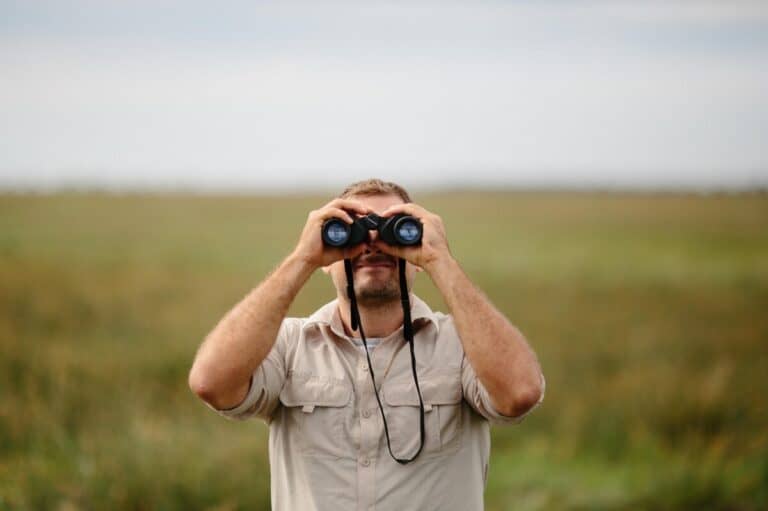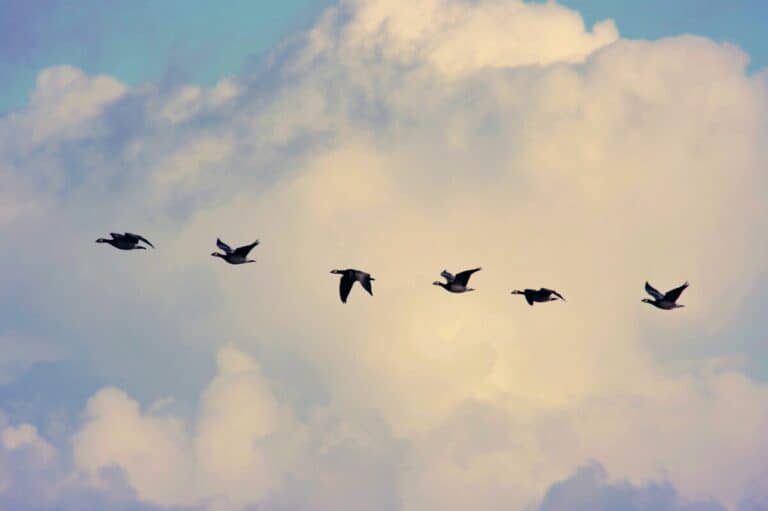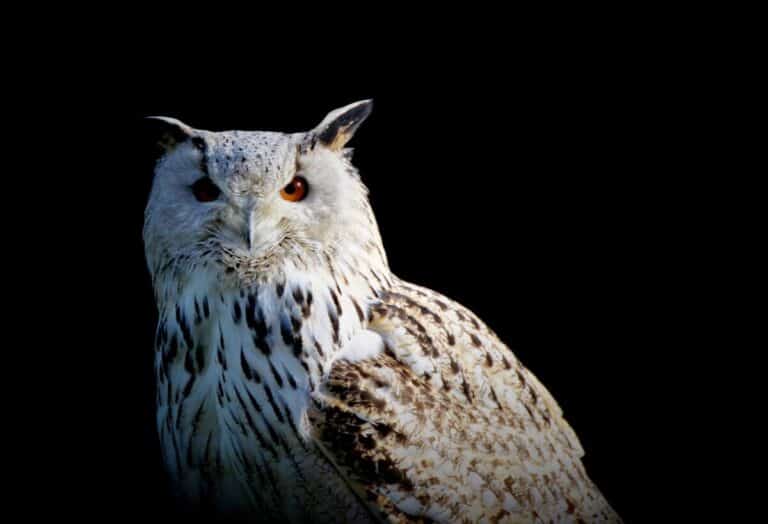Birding Ethics: A Helpful Complete Beginner’s Guide
We’re reader-supported; we may earn a commission from links in this article.
In many cases, you’ve heard of birding ethics, but you’re probably too bored to read the documents! To save you the bore of those documents, I did some research online and compiled this article to cover all aspects of birding ethics. Here’s what I compiled:
Here are the 4 main categories in birding ethics:
- Respect Birds
- Respect Fellow Birders and Other People
- Respect The Environment
- Respect Authorities
All birders are encouraged to be ethical while birding so as to not bring harm to birds or others.
Why You Should Learn Birding Ethics (Even As A Beginner!)
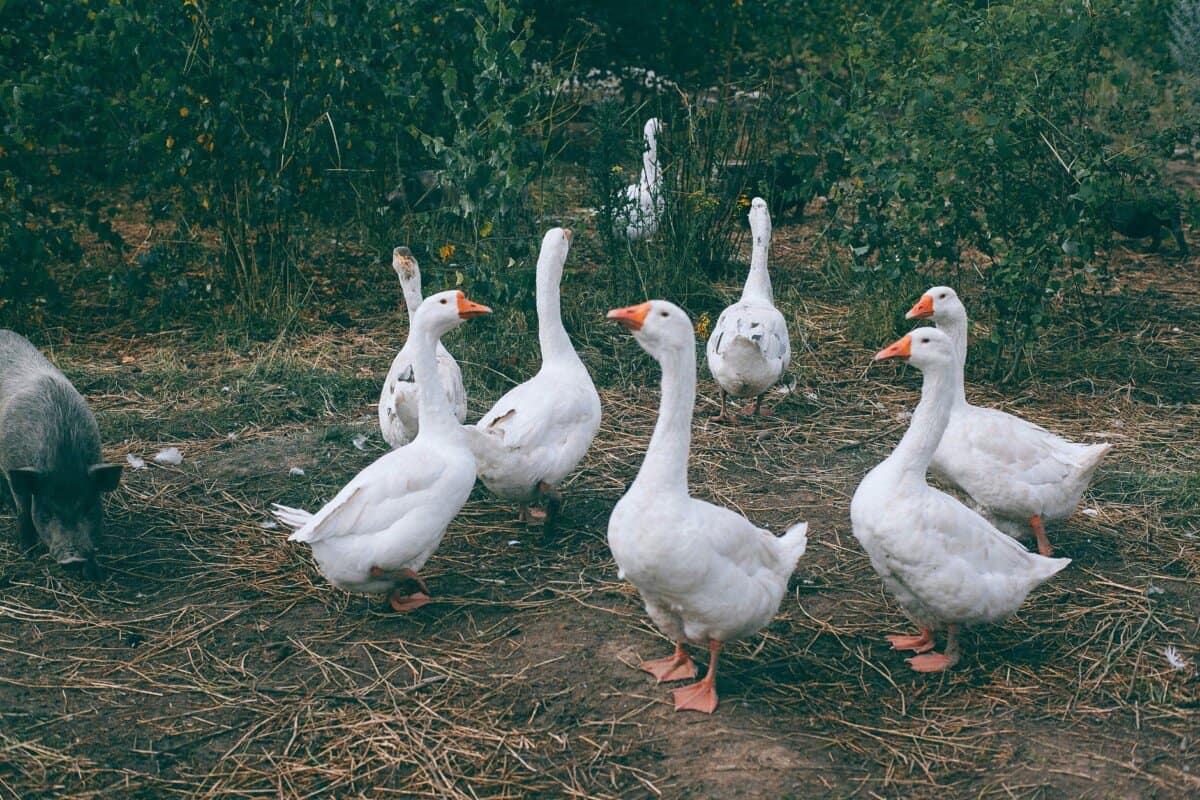
I’m sure you want to have a good birding experience each time you step out the door right? Same! Then it all starts and boils down to the very basics: ethics. If you’re taking/took classes in school, you’ll probably realise that ethics has been stressed on for many decades. Birding also has its own code of ethics.
It’s important for birders of all expertise (especially beginners) to learn, familiarize and practice these rules of birding ethics for a fulfilling and good birding experience. The moment you step out of your door to go birding, you as a birder, represent the entire birding community as a whole to non-birders!
That’s why each of us birders have an equal part to play in being ethical when we go birding – because we make up a community. When the community thrives, we all thrive. Now let’s dive right in to the ethics!
Birding Ethics
Many articles out there online focus too much on the nitty gritties and some are just not compiled too well. Here I will provide a birder’s perspective, and in particular, a beginner birder such as myself. You can also choose to watch the below video as I summarise all of them!
There are 4 main aspects to birding ethics. Here’s number one:
1) Respect Birds

Chances are, if you are a birder yourself, you love birds, or even at least started to develop a love for birds in your areas. Love requires respect. We want to respect and protect the birds that we love to observe, so that we can keep this hobby sustainable in the long run. Here’s how you can start changing your mindset in thinking about birds.
(a) Develop A “Birds First” Mentality
Have you ever heard of the phrase: “ladies first”? It stems from a gesture of respect of gentlemen in the past when they practiced chivalry. Of course, in birding terms, I don’t mean to hold doors for birds! What I mean is to have a certain do-no-harm mentality to them.
Do No Harm: What I mean by do-no-harm is that before you perform a certain action that may influence the bird’s behavior, think first before you act. And think of what kind of impact you will have on the birds. If you love wild birds, you will not want to harm them or cause them to fly away in terror. Do not shoot or throw anything to the birds to harm them.
Birds before data collection/research: If you’re looking to record bird sounds or even to take nice pictures of a bird, please consider the bird’s safety and comfort level first. An undisturbed bird is a way you should view it. If you are performing any actions or recordings that may cause distress to the bird, do not force it.
(b) Educate Yourself and Be Aware of Bird’s Lives
In the previous point, we learned about how we shouldn’t move closer than the bird’s comfort zone. But then you may ask: “how can I know that a bird is uncomfortable?” or “what makes a bird uncomfortable?” Here’s how:
Learn how to tell if a bird is distressed: It is important to know if a bird is distressed so that you know when you are overstepping their boundaries or if you’re too close for their comfort. Some telltale signs are loud alarm calls, birds flying in front of you to redirect their attention, and birds taking on an upright alarmed posture. Though sometimes, these happen unintentionally when you stumble across, say, a sleeping nighthawk, you should always try to avoid these scenarios as much as possible.
Be aware of bird territories: Birds are territorial creatures. Please do bear in mind that when you find birds in the wild, you will be encroaching on their territory, so you have to be careful with whatever you do. When you enter their territory be mindful of your behavior and your volume when speaking.
Be wary of bird nests: Birds are extra careful to take care of their nests as it is their home and a place to house their young. They are instinctively more sensitive to threats and are more anxious when a human such as yourself approach their nests.
I would try to stay clear of bird nests unless you are a professional researcher that knows how to handle being around the nests. Any disturbance to the nests is easily picked up by parent birds, which can cause unnecessary anxiety for them, which can waste their resources and time better used for hunting.
Do not cause birds to flush: Flushing is the action performed by a bird taking off into flight when it senses danger around it. You may be tempted to try to get a particular bird to fly so that you can capture a good shot in tis flight. BUT, this will not only cause you to miss the sighting of the bird easily, but also cause HIGH LEVELS OF STRESS for birds.
Especially during the mating, migration, and nesting seasons, this can have devastating effects on the bird. The bird would have to waste extra energy and resources to escape from danger (you), which could lead to them being too exhausted to hunt or to attract mates or to prepare to house and feed their young.
Minimize playback of bird sounds: As we are all increasingly connected with the internet and technology, we may be tempted to use our phones to playback bird sounds to trigger a reaction out of a bird for our own amusement and excitement.
HOWEVER, this playback can easily confuse a bird during a mating season, where a male bird can be tricked into thinking to pursue an imaginary female bird on your phone! This is dangerous as the bird will again, waste its resources on you instead of settling down and procreating with a proper mate in the wild.
NO harassment of rare migrants/birds: I know it may sound ridiculous to say this but – NO HARMING OF BIRDS! Some people may be tempted to throw sticks and stones at or near the birds to trigger a reaction. This is especially critical for rare migrant birds that do not frequent your areas.
During the migration seasons of the year, birds fly across entire continents just to survive and tide out the cold of their resident country. Disturbing these birds will have detrimental effects to their energy level, especially covering a long flight distance to reach their destination. Again, they may not have enough energy and time left to hunt thereafter.
Light discipline: I have written an article on birding at night where I shared the importance of various aspects of night birding and one of them is light discipline. To have light discipline is to never shine your flashlight over knee-length at night.
Originally something I picked up from my army days, this is a technique used to never accidentally shine a blinding ray of light into the eyes of sleeping birds or owls you see at night.
Nighttime may be the only time for nocturnal birds to hunt, and when you temporarily blind the eyesight of birds, you affect their ability to hunt! Maintain light discipline ALWAYS when birding at night.
Sharing bird habitat locations: It can be quite typical for online birding community groups to share locations of rare migrant birds in your region. But before you upload a picture of your rare lifer migrant bird sighting, you need to consider the repercussions of that action.
When you share its location, you are attracting possibly hordes of twitchers and birds who will flock to see the same lifer bird you spotted. This may affect their comfort level when visiting your region, and they may think twice before coming back to your location during the next migrant season.
Additionally, some photos were taken using smartphones also capture location data. Please ensure that you are aware of any location data before you make a post or upload a picture of your favorite bird. Rare birds need their privacy too.
Do not use drones for bird watching: Lovers of tech will love the drone and will think that drones are a great way to reach hard-to-reach places to capture images of shy birds.
However, it can be easy to forget one thing: drones are LOUD. Drones have a loud noise that can easily scare of any birds that you may approach, affecting their privacy and quality of life. Do consider that the birds can attack your drone when feeling threatened too.
Never use your photography flash: I know that bird photography can be a great hobby to have! But never ever use your photography flash to take pictures of birds.
This applies to both day and night birding. These flashes can be a huge shock to birds, affecting and disrupting their daily activities. There are other ways to achieve a brighter picture, learn from the other resources online!
Keep your distance: When observing birds, you will want to keep your distance. Note that different birds can tolerate different levels of human presence and that this distance will differ.
Ideally, you will want to stay hidden or camouflaged in a bird hide or hideout where you can break the silhouette of your body and observe the bird without alerting it to your presence. If not possible, stay far enough for birds to not be alarmed, and you’re good to go!
NO laser pointers: This one I absolutely cannot tolerate, but I still hear of stories of other birders encountering this while outdoors.
Laser pointers, at high intensities, can cause skin and eye damage to the birds. It can also cause a lot of confusion to the birds as it is something not natural in the wild. To replace lasers, try learning how to describe trees and vegetation in order to convey a bird’s location to other birders
Do not handle birds if not trained: If you are not trained to handle birds, do not attempt to handle birds. This means that even if you spot a baby bird on the grass litter, this does not mean it needs help and that you should help it.
It could be that this is the natural phenomenon of that particular bird species and that you are making a mistake in helping it. Leave the handling to the experts. Contact the relevant bird conservation organizations in your areas, and do not attempt to touch the bird.
2) Respect Fellow Birders and Other People
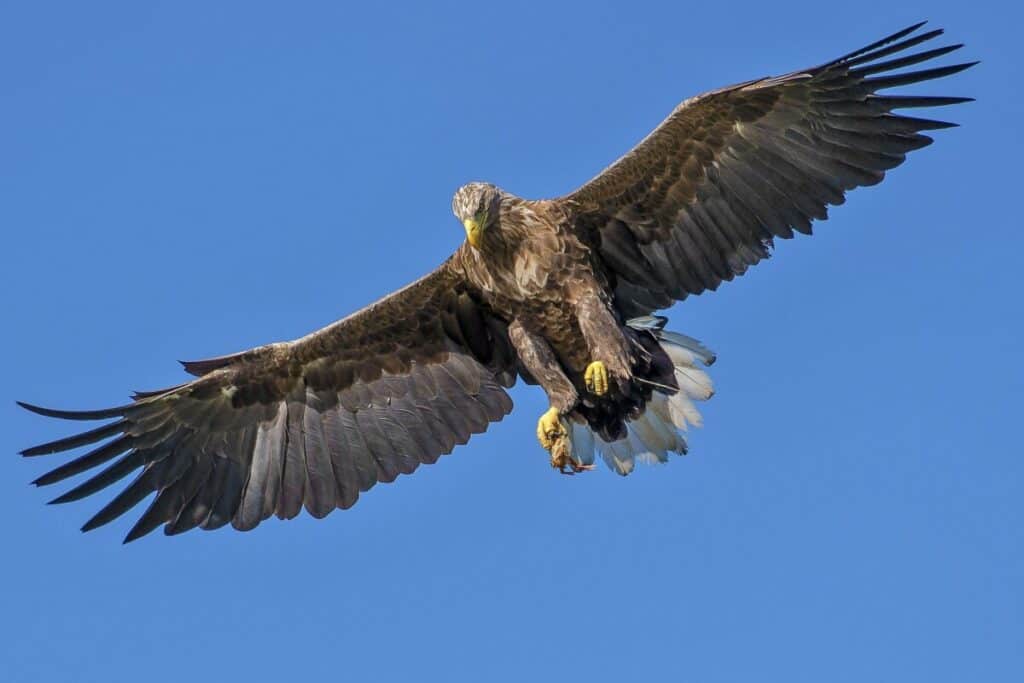
When you’re out birding, you may not necessarily be birding alone. Chances are, there would be other birders around your area who are looking to catch a glimpse of their lifer birds too.
In addition to that, there are also other general members of the public who may happen to be in the vicinity. Therefore, it’s important to display good etiquette to others as we all represent the birding community. You don’t want to make others think that birders are nasty right?
Do not purposely disrupt other birder’s activities: Sometimes, other birders may already be in the process of setting up a good sightline for a rare bird with all their optic gear.
If you happen to see them along the side of a trail, be mindful of your noise level as there is a possibility that there’s a bird in the vicinity that they are looking at. The last thing that you want to happen is to scare the bird off and face angry fellow birders.
Share knowledge with fellow birders: Now you may keep your noise level low when interacting with fellow birders, but that does not mean that you aren’t allowed to communicate or talk at all. Speak in a low and soft tone, and share the knowledge on the locations and behaviors of interesting birds in the area!
Sharing is caring, as everyone is happy when they get to see a rare bird. If you encounter a bird that you are not familiar with and need help with identifying, consider asking others for help! When you ask for help, do consider the appropriate time to ask, and not when others are preoccupied with looking and snapping pictures of a bird.
Be courteous to recreationists: Occasionally, you may encounter a recreationist or simply a member of the public that isn’t a bird watcher. In such cases, they may or may not know the true value of birding ethics such as staying quiet to respect the space of the bird or even simply not scaring the bird into flight when they see them.
If recreationists does something ethically wrong like the guidelines set in this article, do be firm with them and let them know that they should not do so. In doing this, do speak with a kind tone and be courteous.
Dress appropriately: When going birding outdoors, it is important to dress appropriately for the outdoors. Not only is it important for function, but also for cover and concealment.
Put on drab or khaki colored clothing only, and do not wear any bright or neon clothing. In doing so, not only will you be easily discovered by birds, it is often jarring to see such a sight.
Of course, do be prepared with your own gear before you head out birding, so that you would not need to constantly rely on another person to, for example, use their binoculars to spot a bird.
Speak quietly and minimize unnecessary talk: When out in the field, oftentimes, we are tempted to speak loudly to communicate. However, as birders, it is important to keep talking to the minimum. The main purpose of this is to not disturb the natural setting of wildlife as much as possible.
In addition to this, keeping as quiet as possible also helps you to focus and listen in on the bird calls in the region, allowing you to identify more birds! It might even provide a good mental benefit to relieve stress when you learn to listen more and talk less in a natural environment.
Do not point your binos at people or their residences: Firstly, you don’t want to be called out as a creep, thereby tarnishing the wonderful birding community across the world. Secondly, it could be an invasion of privacy of the residences nearby, and could quickly escalate if you are not careful. So keep your binos to the birds, please!
Turn your mobile phones off/put in silent mode: Mobile phones are increasingly being used as technology has begun to slowly take over our lives and our daily functions.
Many today can’t live without it. You may even use eBird or other apps for your identification purposes. If you do not use any apps, keep your phone off to prevent it from unnecessarily ringing. And if you do need to use your smartphone, then keep in on silent or vibration mode, so that you do not unwittingly blast a loud ringtone song in the silent woods, scaring all wildlife awake. 😉
Do not disturb other people’s optical devices: When you see others digiscoping, or looking through their binos or spotting scopes, do not attempt to occlude their vision or jostle around for an ideal spot.
This is bad etiquette.
As other people’s optical devices are not your property, you do not want to be responsible for the breakage of them, as they can cost a lot! Also, don’t do unto others you don’t want to be done to you!
Consider potential disturbance to birds before advertising the presence of a rare bird: Upon spotting a rare bird, our natural instinct is to share it and boast about it on social media or in our respective community groups.
But before you do that, let’s first reflect and think of the potential disturbance that we can cause to the birds. If you expect a large horde of birders who will flock to the site, then reconsider posting it on your social media channels.
3) Respect Environment

In birding, most of the time you will be outdoors, except in cases of birding from your backyard. When out in the field, we must also realize that there are not only birds in the environment. There is an entire ecosystem out there that we need to be mindful of.
Support protection of bird habitats: Birds may beautiful, but so is the habitat that they live in. With no proper habitat, the birds won’t survive. Therefore, it is important that we are increasingly educating ourselves on the latest advances of modern development in the area, and being sensitive for our feathered friends when their habitats are being threatened.
We need to constantly be aware and participate in the conservation efforts of the bird species in our area, to be considered a responsible birder!
Do not feed other animals: When out in the wild, you will definitely encounter other animals. While it may seem fun and interesting to feed animals out in the wild, constant feeding by humans will unknowingly teach and imbue in the wildlife that they can be reliant on humans to feed them.
This will do much more harm than good to the ecosystem than we imagine. In the same way, we also should not feed other birds.
Do not damage habitat: In the spirit of preserving habitat of the wildlife in your area, you should not pull of branches and leaves just for your benefit. Neither should you be plucking fruits off trees just for fun. You may never know if these are needed dearly by the ecosystem in that area.
Though the consequence of your actions may be small, if every person that walks by plucks off one leaf from a tree as he walks by, that tree will be leaf-less in no time.
Do not litter: If you are heading out for a long period of time, consider bringing along your own trash bag to store your trash. Do not litter on the forest floor, as it will only harm the ecosystem and make animals reliant on them for survival.
In the worst-case scenario, the chemicals in processed foods may poison the animals that consume them. Trash bins may not be easily available when you are following a trail in the wild, so it’s definitely wise to bring your own trash bag!
4) Respect Authorities

When out birding, you should be aiming to perfect your birding skills, not breaking the law. Follow these guidelines to do illegal acts and learn to respect the authorities, whether in our own country or in other countries.
Birding abroad: When birding abroad, you should always seek to follow the laws in the area. Be sure to read up on the rules of the parks you visit to ensure you don’t break any rules.
Do not trespass: Do not enter private property at all costs. You don’t want to be sued just because you were chasing your bird blindly.
You need to make sure that the location where you’re birding from is legal for you to enter. Respect other’s privacy and their land. If you notice any protected property by the government or an organisation, do not head into it unless you are sure you are cleared for entry.
Follow rules of public areas: In public parks open for the general public, make sure to follow the rules of the areas. This may include simple things like staying on the trails only.
More often than not, it is for your own safety, as you may not fully know the terrain and altitude of your surroundings. Also, do not damage any public property such as sign boards, toilets, bird hides, and shelters.
Do not start fires unless allowed: Before you start a fire in the forest, you must first make sure the the authorities in the area allow you to do so. When you are sure that it is okay, make sure you are responsible for handling your fire well and not leave it without any supervision.
Do not pull over in your car to spot a bird: Birding can happen anywhere and at any time because rare birds can pop out anytime. I have experienced birds flying overhead as I was driving before, but I have never once stopped to look. You should never pull over your car just to get a closer glimpse of a bird.
This is extremely dangerous for the cars that may behind you which may find it hard to predict a sudden emergency break from you. Leave birding to other times, practice intentional birding. That way, it is more satisfying when you spot birds outdoors!
Credits
I would like to credit a few good sources where I pulled my information and condensed it to this article. Mindful Birding’s Compilation of Ethical Birding Guidelines and Auduborn.org’s Audubon’s Guide to Ethical Bird Photography and Videography
Final Thoughts
Now that you are armed with all this information, I hope you have been well educated and learned a lot about ethical birding. I wish you all the best in your birding adventures. Happy ethical birding!
My Recommended Birding Resources:
Hey there, Justin here!
Here’s a list of all my favorite resources, products, and brands I trust and love.
My Celestron Nature DX 8×42 Binoculars: It’s a great budget pair for beginner birders. Highly valued for its price! Read my review.
Safe Paint for Bird Baths Guide: Learn about non-toxic paint for painting bird baths.
Safe Sealers for Bird Baths Guide: Learn which sealers are safe for bird baths.
Safe Paint for Bird Feeders Guide: Learn what special care needs to be taken to paint bird feeders with the right paint.
Safe Paint for Birdhouses Guide: Learn about non-toxic paint for painting birdhouses. (Not the same as bird baths!)
Bird Identification Apps Guide: 2 of my favorite birding apps are Merlin Bird ID, and eBird Mobile! Merlin is great for tracking and identifying birds, and eBird Mobile is great for tracking the birds sighted when birding.
Check out my resources page for the full list of resources I recommend!

Justin Chia
Justin is the founder and author of Birding Outdoors. He is a Nanyang Technological University (NTU) alumnus with a Bachelor of Biological Sciences and a former data analyst.
Now, Justin runs the Birding Outdoors blog full-time, hoping to share his deep love for birds, birding, and nature with others.
To unwind, Justin enjoys gaming and reading.



![Why Do Some Birds Fly SO High? [ANSWERED! + FAQs]](https://birdingoutdoors.com/wp-content/uploads/2021/06/birds-flying-at-diff-heights-6-768x512.jpg)
